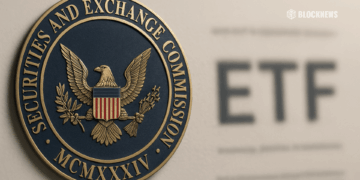- Research from Nansen indicates significant transactions between FTX and Alameda prior to the exchange’s downfall.
- About 90% of FTT token supply was under the control of both FTX and Alameda, hinting at possible manipulation of their financial records.
- The downfall of the Terra ecosystem might have triggered liquidity problems for Alameda, leading to a sizable FTT-backed loan from FTX.
Investigators at the blockchain analytics group, Nansen, have cast a spotlight on the events that took place just before the downfall of the FTX exchange. This includes a staggering transfer of $4.1 billion in FTT tokens between FTX and Alameda Research.
The recently released Nansen report to Cointelegraph offers insights that underscore the intertwined operations of these two entities. Both businesses were founded by Sam Bankman-Fried, who now faces a series of legal challenges related to FTX’s collapse.
The origin of FTX’s troubles seems to be linked to earlier warnings about Alameda’s assets. Specifically, a significant 40% chunk of Alameda’s $14.6 billion assets was invested in FTT tokens as of September 2022.
Digging deep, Nansen analysts unearthed suspicious transactions between FTX and Alameda even before the troubling reports were published. Records show that from September 28 to November 1, Alameda moved $4.1 billion in FTT tokens to FTX. Additionally, there were consistent transfers of stablecoins pegged to the U.S. dollar, totaling about $388 million. Notably, FTX was in possession of about 280 million FTT tokens, which is roughly 80% of the entire 350 million FTT supply. The data further captures huge amounts of FTT trading volume—running into billions—transacted between several wallets of FTX and Alameda.
Interestingly, Nansen’s report points out that a large part of the FTT token supply, which includes both company tokens and those not sold by the company, was locked in a contract set to last three years. An Alameda-connected wallet was the sole recipient of this contract, as per the researcher’s findings.
With both FTX and Alameda jointly controlling an overwhelming 90% of the FTT token supply, Nansen’s findings suggest that the two might have had the power to boost each other’s financial books. Another turning point appears to be the downfall of the Terra system and the ensuing financial difficulties of Three Arrows Capital. These events potentially put a strain on Alameda’s cash flow due to the plummeting value of FTT. This, in turn, may have triggered a discreet $4 billion loan to Alameda from FTX, secured by FTT.
Corroborating this, the researchers indicate that such a transaction seems to align with a $4 billion loan figure mentioned by individuals close to Bankman-Fried during a conversation with Reuters.
Understanding FTX’s Financial Entanglements
The exploration into FTX’s dramatic downfall is an eye-opener about the intricate financial and operational entanglements that can exist behind the scenes in the crypto industry. This saga, illuminated by Nansen’s investigative foray, lays bare how intimately linked FTX was with Alameda Research. It’s noteworthy that such substantial amounts were transferred in a short span, leading one to question the checks and balances in place and the oversight mechanisms within the crypto ecosystem.
Moreover, the fact that both entities controlled an overwhelming majority of the FTT token supply raises legitimate concerns about the potential for manipulation, especially in an industry that champions transparency and decentralization. This situation could set a precedent for regulators to cast a keener eye on crypto operations and relationships in the future.
The cascading impact of the Terra ecosystem’s downfall and Three Arrows Capital‘s financial woes further emphasizes the interconnected vulnerabilities within the crypto landscape. It serves as a cautionary tale about the domino effects that can occur and underscores the need for enhanced risk management practices in this burgeoning sector. As the story unfolds, it’s a potent reminder of the multifaceted challenges the crypto world faces and the inherent volatility of its foundations.














